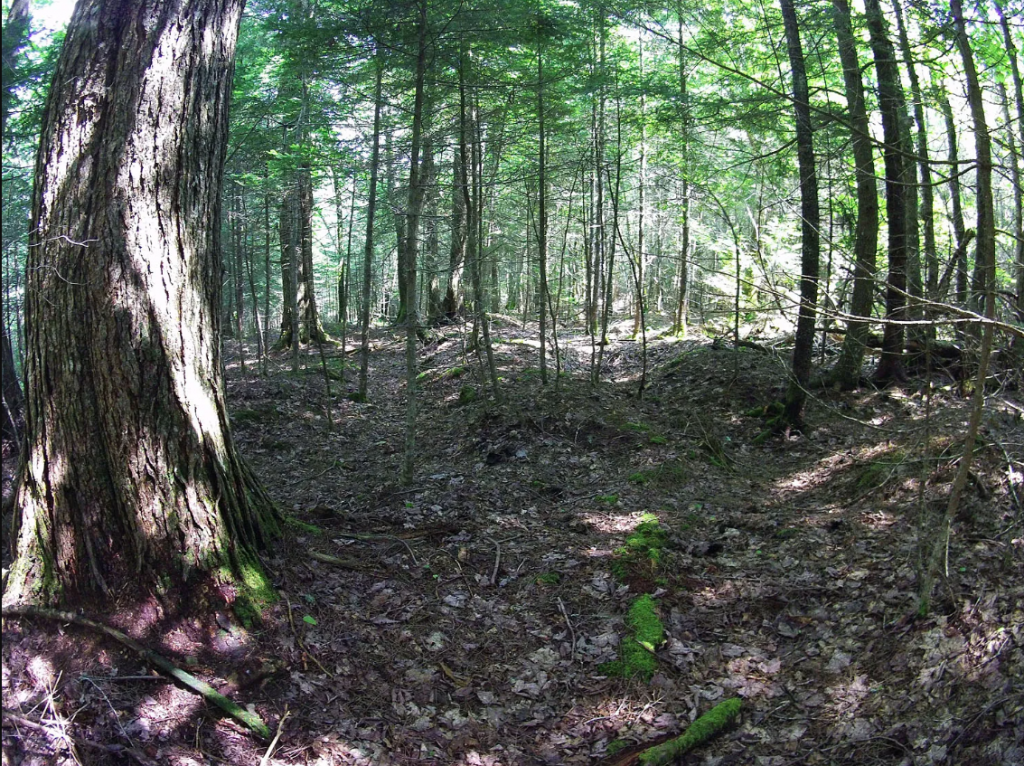– Mounds are formed by blowdown of Big Trees
– Age = Oldest Tree on mounds +10-15 years
– Pits and Mounds with similar orientation at Sandy Lake—>Hurricanes
hitting from SE; Sites 1,2,3 likely in 1869 (Saxby Gale, 155 yrs ago) or 1873
(The Nova Scotia Storm, 151 yrs ago); Peninsula a storm 60-70 years
earlier.
– Ecological Significance – vernal pools in pits; mounds are preferred seedbeds; sites of the Wabanaki Forest Love Affair (Yellow Birch & Hemlock); microbiota continuity.
More Info
Pit-and-mound topography
On Wikipedia
Wabanaki Forest Love Affair
The physical intimacy of yellow birch and hemlock often observed in old Wabanaki forest is more than a coincidence
Pit & Mound Topography
Page on this website provides descriptive data on the pit and mound topography at Sandy Lake and Environs
View the Mature/OG Forest page for a discussion of their significance to the forest ecology of Sandy Lake and Environs.

